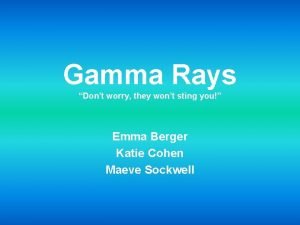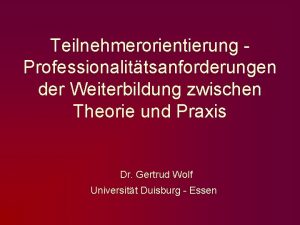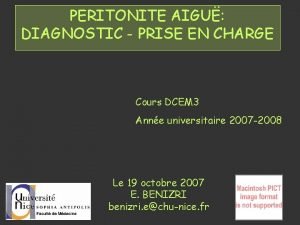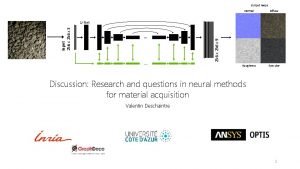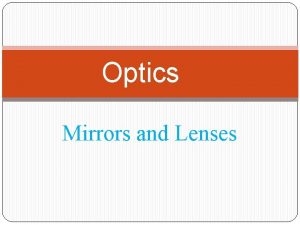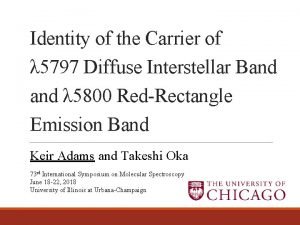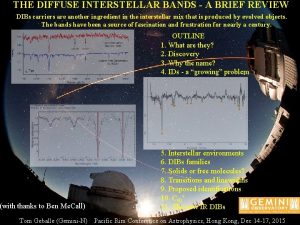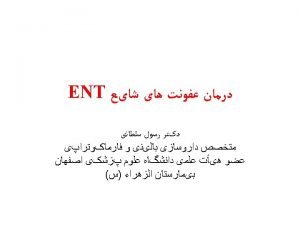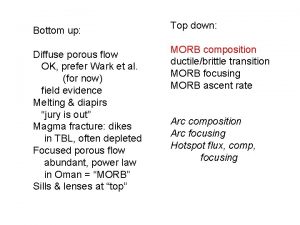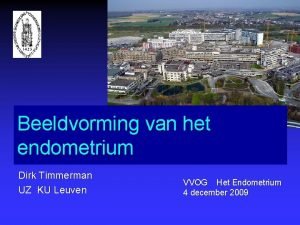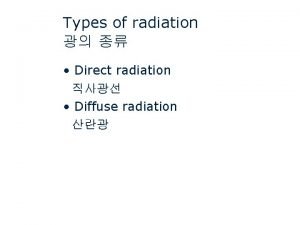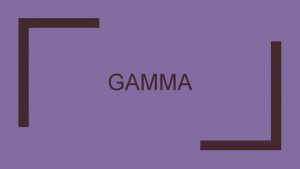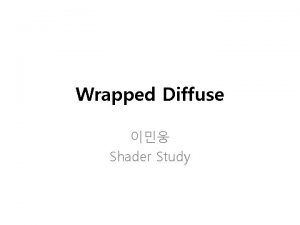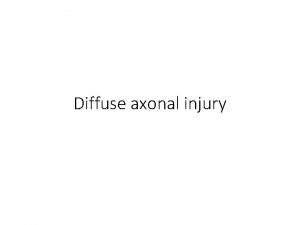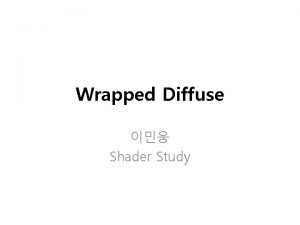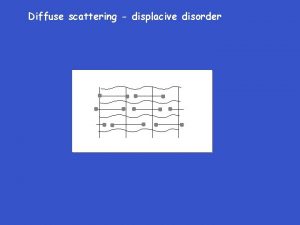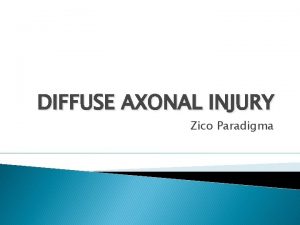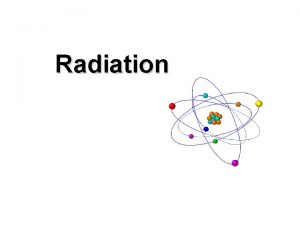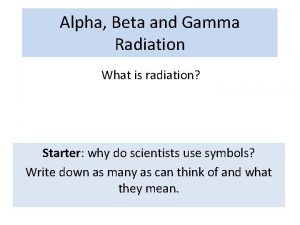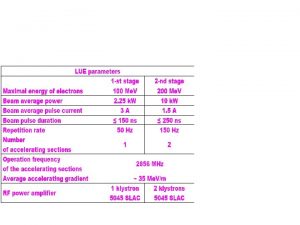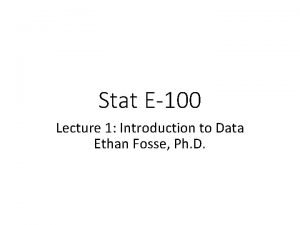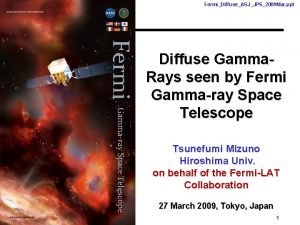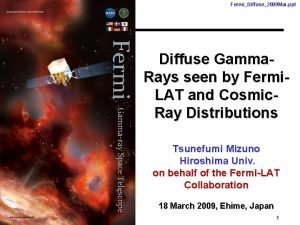Search for diffuse gamma radiation with energy E100















![Detection efficiency for gamma-ray showers with axes inside the “Carpet” [calculation] Detection efficiency for gamma-ray showers with axes inside the “Carpet” [calculation]](https://slidetodoc.com/presentation_image_h2/1763dc4a3da21c7a5d26f3987049c58a/image-16.jpg)







- Slides: 23

Search for diffuse gamma - radiation with energy Eγ>100 Te. V at the “Carpet-3” array A. U. Kudzhaev, D. D. Dzhappuev, V. B. Petkov, A. S. Lidvansky, V. I. Volchenko, G. V. Volchenko, E. A. Gorbacheva, I. M. Dzaparova, N. F. Klimenko, A. N. Kurenya, O. I. Mikhailova, K. V. Pticina, M. M. Hadzhiev, A. F. Ynin Baksan Neutrino Observatory, INR of RAS

Dependence of integral flux of gamma-ray from energy threshold one [Yu. A. Fomin, ar. Xiv: 1410. 2599 v 2 [astro-ph. HE] 10 Oct 2014 ] Estimates of the integral gamma-ray flux: Detection claims by Tien Shan (gray open circle) and Lodz (gray solid circle) and EAS -MSU (dark red squares and error bars). Gray triangles, squares and diamonds are for EAS-TOP, CASA-MIA, and KASCADE, respectively. Black open symbols: triangles (Yakutsk), diamonds (Pierre Auger), small squares (AGASA, large squares (Telescope Array). The curve represents a theoretical prediction for the model in which photons and neutrinos are produced in cosmic-ray collisions with the hot gas surrounding our Galaxy, assuming the best Ice. Cube observed neutrino spectrum.

Baksan Neutron Monitor Large Area Muon Detector The central part of Carpet Outside detector

The “Carpet-2” air shower array

The “Carpet“ array (400 detectors)

Passing of muons and hadrons through an absorber of MD

1 st stage of the Muon Detector, 175 m 2 , in operation since 1999 year

The trigger of MD for record of events

Experimental data In order to definition energy EAS, used measured experimental value it is the total number of relativistic particles (Ne) in “Carpet” and for definition of number muons in shower, nμ – number of muons with threshold energy registered in MD. The “Carpet” array and MD are working independently each other and have different dead times of registered electronics. But time marks of events in MD and “Carpet” are made at the same clock and it give possibility to conduct an identification of coincidence events in time interval Δt=1 msec. For this analyses using a data from array in period 1999 -2011 years are recorded. In data processing are included an events satisfied to next conditions: 1. an axis of showers are in “Carpet”(200 m 2); 2. zenith angles of showers θ<40°; 3. No ≥ 104 in “Carpet” ; 4. a number of nonzero detectors is more 300 in “Carpet”; After such selection are remained 130000 of showers, stored information in 3390 days.

Simulation of experiment For simulation of showers used the package of program CORSIKA v. 6720 (QGSJET 01 C FLUKA 2006). There was simulated of 5400 showers from primary protons with energy in the interval (0. 316 - 31. 6) Pe. V, the 3665 of showers from nuclear iron with energies in interval (0. 316 - 31. 6) Ре. V and 3360 of showers from gamma-rays with energies in the interval (0. 316 – 31. 6) Pe. V. By results of simulation was obtained: correlation distribution nμ – Ne, where nμ – number of muons in MD, with 175 m 2 area , Ne- total number of relativistic particles in Carpet; an averaged dependence of energy for primary protons and gamma – rays from value Ne: Ep [Ge. V] =174 • Nе. 0. 48 Eγ [Ge. V] =138 • Nе. 0. 65

The limitation at the flux of diffuse gamma-radiation For separation of showers of primary gamma-rays from background ordinary EAS have been carried out the analysis of correlation dependence in plane nμ – Ne of detected and simulation of events. In this work we analyse the region with Ne>106 in which for used the method of processing of experimental data must separate model gamma rays from ordinary EAS. For estimation of efficiency selection of gamma-rays at Ne≥ 106 and Ne≥ 5∙ 106 on plane nμ-Ne is distinguished the region an arrangement only simulation of gamma-rays without detected of EAS. At figure the boundary of this region is distinguish by broken line. The relation of number simulation of gamma-rays is situated in this region to it total number at Ne≥ 106 and Ne≥ 5∙ 106 are by efficiency εγ of it detection. The calculated this way the values for two intervals on Ne equals 0. 6 and 0. 8 accodingly.

Distribution nμ - Ne

As in the distinguish region are absent the detected an events (absent a background), must used the next formula for valuation of upper limit for flux of primary gamma-rays at 90% confidence: I γ=2. 3/(S∙T∙εγ), where S=196 m 2 – the area of detected axes EAS, T – the pure time selection of information and εγ – the efficiency of detection of showers from primary gamma-rays. The upper limits for Eγ≥ 1. 3∙ 1015(Ne≥ 106) and for Eγ≥ 3. 2∙ 1015(Ne≥ 5∙ 106), using for received the values of efficiency were obtained.

The estimation of integral flux of gamma-showers by “Carpet-2” data. Time an accumulation: 3390 days

Distribution of nμ - Ne for EAS with axes in “Carpet” with different areas [calculations]
![Detection efficiency for gammaray showers with axes inside the Carpet calculation Detection efficiency for gamma-ray showers with axes inside the “Carpet” [calculation]](https://slidetodoc.com/presentation_image_h2/1763dc4a3da21c7a5d26f3987049c58a/image-16.jpg)
Detection efficiency for gamma-ray showers with axes inside the “Carpet” [calculation]

“Carpet-3” experiment The preparation of the experiment is assumed step-by-step an increasing of continuous area MD at first to 410 m^2 and later to 615 m^2 one. For increasing of area detection of axes EAS will be placed 20 modules additionaly in wich are arranged in 9 of scintillator counters by area 0. 92 m^2 each. At present at underground tunnels are placed already 410 plastic scintillator counters with total continuous area 410 m^2 that are completed by electronics. The calculations of efficiency of selection gamma-rays and sensitivity of different configurations of shower array from primary gamma rays were carried out. 17

Carpet-3: planned to operate since 2018 Muon Detector 410 m 2017 Additional 20 modules of surface detectors of 8. 3 m 2 area (9 scintillation counters of area of 0. 92 m 2 in each module) December 2017 2

2 -d stage of the Muon Detector, 205 m 2 205 detectors are placed in the first tunnel

Carpet-3 sensitivity to the flux of diffuse cosmic gamma rays At next figure are shown the expectation limitations in flux of cosmic diffuse gamma-radiation for two of configurations of “Carpet-3 ”array and for two values of time collections of information. As seen, with area MD 410 m^2 the new array will hase the best sensitivity to flux of primary gammarays with energy in the interval 100 Te. V-1 Pe. V.

Estimates of the integral gamma-ray flux 21

Current situation with Carpet-3 construction Two underground tunnels are filled with scintillation counters of total continuous area of 410 m 2. The detectors are totally equipped with electronics and will be tuned together with data acquisition system at the end of 2016. Full-scale operation of 410 m 2 MD is planned to be started in the first quarter of 2017. 20 additional shower detectors will be installed to extend the array during 2017 with a total area of 180 m 2. Every such detector contains 9 scintillation counters of 1 m 2 area each.

Conclusion 1. The Carpet-3 air shower array is under construction at the Baksan Neutrino Observatory by step-by-step upgrade and extension. The aim is to study diffuse gamma-ray background at energy above 100 Te. V. 2. After final accomplishment of this array it can be competitive in its class and will have a chance to get the world-best limit on the flux of gamma rays of cosmic origin. 3. This will allow one to solve the problem of origin of highenergy astrophysical neutrinos detected by Ice. Cube.
 Gamma rays discovery
Gamma rays discovery Confectionery
Confectionery Vray sphere light
Vray sphere light Diffuse sozialbeziehung beispiel
Diffuse sozialbeziehung beispiel Gibberellins
Gibberellins Grisaille diffuse asp
Grisaille diffuse asp Diffuse roughness
Diffuse roughness Plano convex lens
Plano convex lens Focus mode and diffuse mode
Focus mode and diffuse mode Bildentstehung am ebenen spiegel
Bildentstehung am ebenen spiegel Diffuse esophageal spasm barium swallow
Diffuse esophageal spasm barium swallow Religioni più diffuse
Religioni più diffuse Chapter 4 folk and popular culture
Chapter 4 folk and popular culture Effuse and diffuse
Effuse and diffuse Diffuse identity
Diffuse identity How does folk culture diffuse
How does folk culture diffuse Linguistic diversity ap human geography definition
Linguistic diversity ap human geography definition Kinetic particle theory questions
Kinetic particle theory questions Diffuse interstellar bands
Diffuse interstellar bands Laryngitis
Laryngitis Ambient diffuse specular
Ambient diffuse specular Kerley b lines
Kerley b lines Qcrack
Qcrack Diffuse adenomyosis
Diffuse adenomyosis
